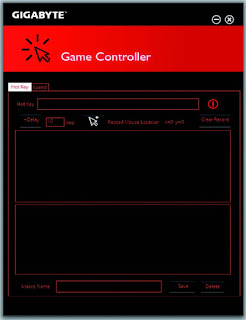Since the advent of the new Intel Haswell-E series processors Gigabyte has been catering to all the sections of the market making and attracting customers through a three pronged approach.
First, its Ultra Durable boards cater to the widest cross-section of potential buyers, with models ranging from the budget-oriented X99-UD3 up to the high-end X99-UD7 Wi-Fi.
Next, the Overclocking series of boards are for extreme overclockers aiming to push clock speeds, and consequently voltages, to dizzying heights. Buyers of these boards can expect voltage measurement points, sub-zero cooling, and competitive benchmarking tools.
Finally, the G1 Gaming series of boards is designed to appeal to, well, gamers. Gigabyte outfits these boards with beefed-up onboard audio, gaming-focused networking controllers, and LEDs-a-plenty. One such board is the X99-Gaming 5P which Gigabyte had been generous enough to send over to me for review.
The motherboard conforms to the EATX form factor, meaning that you will need a wider than standard case to house the board. While many full tower cases will accommodate EATX motherboards with ease, there are some mid-tower cases, such as the NZXT H440, which only officially support ATX boards.
Inside the Box
The Gigabyte X99 Gaming 5P comes in the same old durable and attractive packing from Gigabyte, its a solid heavy cardboard box with the big eye letting you know right away that its a G1 Gaming Series motherboard. The back of the box has a picture of the motherboard, showing a list of features, specifications, and the I/O Port layout. Flipping the top panel open reveals a window showing off all of the Gaming 5P’s motherboard goodness. With the motherboard out of the box you can find all the accessories and necessaries that it comes along with.
The Gaming 5P comes with the following:
- Back-lit I/O shield
- 6 x Sleeved SATA 3 Cables
- 2/3/4 Way SLI Bridges
- 2-Way CrossFire Bridge
- 1 to 3 Power Cable (2X4 ATX 12V)
- User’s Manual
- Quick Installation Guide
- Motherboard Driver Disk
- Gigabyte “Ultra Durable” Case Badge
Layout and Closer Look
Coming to the motherboard itself, the X99-Gaming 5P is decked out in the same familiar red-and-black color scheme as Gigabyte's other gaming boards. A pure-black PCB combined with Gigabyte-exclusive jet black Nippon Chemi-Con capacitors, rebranded by Gigabyte as "Durablack" caps gives the board a stealthy look. All in all I'm pretty impressed by this layout as I'm a big fan of the Gigabyte Z97X chipset gaming series's design and this one is some what a reminiscent of the same in the X99 flavor.
The motherboard features Five fan headers, including the CPU fan header (red circle), Three system fan headers (yellow circles) and a CPU_OPT fan header (green circle). This can be used for dual fan air coolers or to control the pump in liquid cooling systems.
Monitoring capacity is provided by ITE’s IT8620E chipset. Further ITE chipsets (2x IT8792E and IT8951E) provide various functionalities for the motherboard. Dual BIOS chips are used for redundancy.
The motherboard also features a total of Ten SATA 6GB/s ports. The X99 chipset [yellow box] can run Six SATA ports. Although Two of these ports switch between the SATA-Express, or the M.2 socket 3 Slot. The second controller [green box] can run Four additional SATA ports.
For those who want to use a M.2 SSD plus an on-board WiFi card, the Gaming 5P has the perfect solution. Dual M.2 Slots offer you the ability to use the bottom slot for a WiFi adapter card (30mm long), and the top slot for a M.2 SSD (60mm or 80mm long).
One key feature that truly makes it an enthusiast grade board, in my books, is the CPU_MODE dip switch located right next to the SATA connectors. Flipping the CPU_MODE switch to “on”, enables all of the 2083 PINs on the CPU socket. Having a switch to enable or disable the OC socket is a nice feature as it allows you to run your CPU within normal specs when not Overclocking. Also note that the CPU socket, memory, and PCIe x16 slots are gold plated with 30 microns of gold. This is twice the industry standard.
As claimed by the company, the X99 Gaming 5P supports quad-GPU setup. But this may not be true in every case. Since the board does not have a PLX chip onboard, all the PCIe lanes are powered by the CPU.
2 x PCI Express x16 slots, running at x16 (PCIE_1, PCIE_3)
2 x PCI Express x16 slots, running at x8 (PCIE_2, PCIE_4)
All four x16 slots are usable, no matter how many PCIe lanes your CPU provides. The processor choice just governs how many lanes each x16 slot gets: for models with 40 lanes, the four slots will have lane arrangements of x8/x8/x16/x8, while those running Core i7-5820K are looking at x8/x8/x8/x4.
But Gigabyte has definitely innovated over here by installing an onboard external clock generator along with making a direct connection of the CPU to one of the PCI-E x16 lanes bringing the overall PEG bandwidth to 320GBps rather than the 256GBps that should've been in absence of a PLX chip.
The Gaming 5P also features true enthusiast grade, on-board audio as well. Creative’s Sound Core3D quad-core audio processor handles the sound processing, offloading that chore from the CPU. You’ll also find support for high-quality audio headgear. There’s a front headphone amplifier that pumps out loads up to 600 ohms, and there’s a gain boost switch (red circle) to increase amplification from 2.5X (default) to 6X (high amplification). The latter is intended for speakers or headphones with high impedance. GIGABYTE also includes its OP-AMP (operational amplifier) technology (yellow circle), which lets you swap op-amps to change the sound to suit your needs. Out of the box, the Gaming 5P features a TI Burr Brown OPA2134 op-amp.
Along the bottom, we see all the typical headers for front USB, audio, buttons and an addition PCI power connection in the form of a male molex connector.
This board features the standard 8-DIMM single latched slots supporting up to 128GB of 3333MHz memory. The CPU and DIMM slot pins feature upgraded gold-plated pins, allowing better connection quality and higher bandwidth allowance.
The I/O side of the board presents us with a wide array of connections. Firstly, two separate PS/2 ports, then 4x USB 2.0 ports (yellow), 5x USB 3.0 ports (Blue), 1x USB 3.0 port enabled for Q-flash and the recommended port for keyboards/ mice for initial boot (white). You will also find 1x gigabit LAN port, 5x HD audio jacks, 1x S/PDIF optical port and 2 empty WiFi antenna holes.
Key Features
Six Phase Digital Power Delivery System: The power delivery to the CPU is all digital. IR Digital PWM & IR PowIRstage® ICs provide precise current sensing accuracy, and better thermal load distribution. The MOSFETs used are six International Rectifiers IR3556M PowIRstage solutions which are managed by the same company’s IR3580 PWM controller. All six chokes are marked ‘1007R3 R15 03PH15 K’.
The Gaming 5P also features server level chokes. Gigabyte has used high end, enthusiast grade components to make sure that you get the most out of your motherboard.
Interconnected Chrome plated Heatsink: Gigabyte cools the MOSFETs and the X99 chip on the south bridge (red circle) by using a sturdy metal heatsink that is connected via chrome plated heatpipe to the cool & stabilize the system. The yellow circle highlights the patented dual bios feature of the board.
The heatsink is LED backlit and this is what I'd always missed in the previous generation boards.
LED illuminated heatsink, audio trace path and I/O Shield: The back-lit I/O shield is a very nice touch and I think it makes finding ports in a dark room easier. If for some reason you find the back-lit I/O shield (or Audio Trace Lighting) too bright, you can turn it off using the bundled Ambient LED software or you can configure it to glow up in accordance with sounds of music using "Beat Mode" or simply switch to a soothing breathing mode via the "Pulse Mode".
Creative SBX Pro Studio Audio Suite: SBX Pro Studio™ suite of audio playback technologies deliver a new level of audio immersion. Realistic surround sound, the ability to clearly hear specific sounds in a gaming environment are just a few elements of SBX Pro Studio that enhances the overall experience, be it movies, games or music.
Quad DAC-UP USB Ports: Featuring Quad USB 2.0 ports, GIGABYTE USB DAC-UP provides clean, noise-free power delivery to your Digital-to-Analog Converter. DACs can be sensitive to fluctuations in power from the other USB ports, which is why GIGABYTE USB DAC-UP takes advantage of an isolated power source that minimizes potential fluctuations and ensures the best audio experience possible.
BIOS and Bundled Software
BIOS
The X99-Gaming 5P has the same UEFI as Gigabyte's other 9-series boards including the UD5 WiFi which I'd reviewed earlier. Users are presented with three firmware interfaces: a novice-friendly Startup Guide, an enthusiast-oriented Smart Tweak UI, and an old-school Classic Mode, all switchable to one another by pressing F2. Here's what Smart Tweak UI looks like on the Gaming 5P:Upon entering the 1920×1080 (dependent upon your monitor’s resolution) UEFI, Gigabyte opens the frequency page. The interface packs large amounts of information into a single screen by virtue of its 1920×1080 resolution. Voltages, frequencies and other monitoring parameters are consistently scattered around the outside of each page.
A number of speed parameters and performance boosts can be selected via the Frequency page and its subsections. There are automated overclocking profiles which increase the speed of a relevant CPU to as much as 4.3GHz, which is impressive.
Entering Classic Mode provides everything included in Startup Guide and Smart Tweak, plus an even more detailed set of options. The look and feel of Classic Mode is a little old school, but it works well and is easy to navigate. When entering Classic Mode, you first land in the M.I.T. (Motherboard Intelligent Tweaker) area where everything you need to overclock is found. There are six sub menus where you can access frequency, memory, and voltage settings. The sub menus also contain your system monitoring, fan control options, and a few other miscellaneous options.
One of the features that caught my eye here is the ‘CPU upgrade’. I’ve never seen a feature like this, so being curious and clicking it, it opened a small list of compatible CPU’s and some conservative overclocks. I don’t see why the 5820K and 5930K are possible options here as the BIOS already knows I’m using a 5960X. You might get some bad experiences from novices clicking a CPU that isn’t theirs.
Bundled Softwares
As with the board's firmware, the X99-Gaming 5P's included software is essentially the same as what the other X99 boards, except for one small difference, this is a gaming board. As a result, the interface wears a coat of red paint rather than the traditional blue!Everything you need to get the most from your system can be found in this software suite. Desktop automatic overclocking comes via the EasyTune app, or you can choose to manually overclock as well. Additionally, there are fan control options available, EZ Setup options for configuring storage settings, and a host of other utilities within APP Center. The thumbnail images above will show you a partial list of what’s available, but suffice to say APP Center is well worth installing to explore it’s many useful tools.
Load Tests and Benchmarks
As always I proceeded with a series of real life and synthetic benchmarks to determine the true potential of the Gigabyte X99 Gaming 5P motherboard with the following test setup:CPU: Intel Core i7 5960X (OC at 4.5 GHz)
Motherboard: GIGABYTE X99 Gaming 5P
RAMs: Corsair Vengeance LPX 2800Mhz 16GB DDR4 (4x4)
CPU Cooler: Corsair H110 CPU Liquid Cooler
Graphics card: Gigabyte R9 290X windforce 3X OC 4GB DDR5
Hard disc: ADATA SP920SS 256 GB SSD
Power Supply: Cooler Master V1200 1200W 80+ Platinum
I managed to over clock the Intel i7 5960X to a respectable 4.5Ghz at 1.25V. Any further over clocking was easily possible but the Corsair H110 wasn't able to keep the temperatures in the safe limit and we experienced thermal throttling. With the use of a better air cooler or a larger liquid cooler I'm sure the Gaming 5P can hold the 5960X at around 4.7Ghz stable.
Super Pi Moded
This test shows that the X99 Gaming 5P is a very capable motherboard and is able to harness all the power of the i7 5960X. It also shows that there is no real memory bandwidth issues. Hence the value obtained was 7.7s at OC 4.5Ghz which is a great score.Intel XTU
Intel® Extreme Tuning Utility (Intel® XTU) is tweaking and monitoring software used not only for benchmarking a system but also is a handy over clocking tool. On an over clocked Intel 5960X at 4.5Ghz an impressive score of 2249 was obtained which is a testament to the high performance of the Gigabyte X99 Gaming 5P in harnessing the power of the processor and other components.
CineBench R15
Cinebench uses Maxon's Cinema 4D engine to render a photo-realistic scene of some shiny balls and weird things (we miss the motorbike). The scene is highly complex, with reflections, ambient occlusion and procedural shaders so it gives a CPU a tough workout.
As Cinema 4D is a real-world application - used on films such as Spider-Man and Star Wars - Cinebench can be viewed as a real-world benchmark.
3D Mark
3DMark Firestrike is Futuremark’s latest creation for testing the GPU performance of high-end gaming PCs using Direct X 11 graphics.
Crystal Disk mark
CrystalDiskMark is designed to quickly test the performance of your hard drives. The program allows to measure sequential and random read/write speeds. Here we are using the ADATA SP920SS 256 GB SSD and its performing flawlessly. The speed of the SSD is matching with the Rated speed by ADATA, so there is no bottleneck issue.DPC Audio Latency Analyser
Since the X99 Gaming 5P is all about its Creative Sound Core 3D so we put it to test using DPC which is a Windows tool that analyses the capabilities of a computer system to handle real-time data streams properly. It may help to find the cause for interruptions in real-time audio and video streams, also known as drop-outs.
Its clearly visible that the output of the Creative Sound Core 3D is much better than the Realtek ALC 1150 chip used in other boards making the Gaming 5P the ultimate multimedia champion in the Gigabyte family.
Assasin's Creed Unity
Due to its poor PC port optimization the AC Unity puts heavy load on both the CPU aswell as the GPU of any configuration so we used it to see what FPS range our system could produce on the Gigabyte X99 UD5 WiFi. The results were great and we obtained good FPS on Ultra Settings at 1080p resolution.Tomb Raider 2013
Being a graphic intensive game with beautiful textures to render we put Tomb Raider at Ultra settings & 1080p resolution on the system to see what kind of performance we can obtain.Crysis 3
Every PC enthusiast knows that the Crysis 3 is very punishing game for any configuration especially when you set all the settings to maximum. We did the same and the results were more than impressive!My Verdict
What's more, when it comes to overclocking, the X99-Gaming 5P is a
breeze to use. Less seasoned tweakers will appreciate the pre-baked
profiles and the auto-tuning feature in Gigabyte's Easy Tune utility,
and veteran overclockers will be right at home with the many buttons and
levers to tweak in the firmware. As memory manufacturers begin to push DDR4 speeds higher, the increased XMP profile support of up to 3333 MHz will be something you’ll be glad to have. LED illuminated heatsink and I/O shield is an icing on the cake and my favorite eye logo is back so I'm all the way more impressed.
I give it a 9.5/10



















































0 comments:
Post a Comment